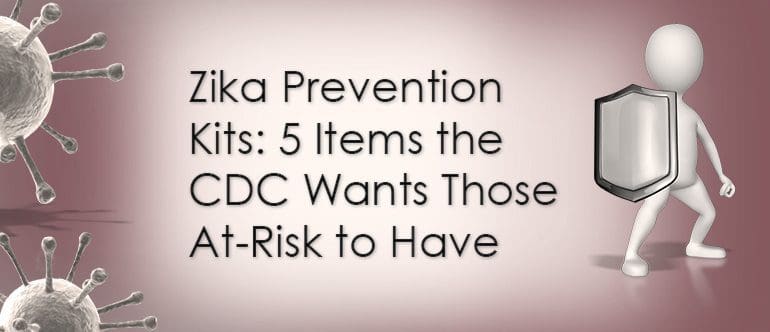Call us toll-free: 800-878-7828 — Monday - Friday — 8AM - 5PM EST

By Brian Zimmerman for Becker’s Infection Control & Clinical Quality
Before the detection of the country’s first instance of local Zika transmission in Miami, Congress broke session for summer recess without passing emergency funds for prevention. Earlier this month, the CDC provided states and territories with $16M in stopgap funding for measures to help contain the spread of Zika. The CDC has also recommended people in areas at risk for local mosquito transmission stock up on a few items, according to WIRED.
Here’s what’s inside a CDC-recommended Zika prevention kit:
1. Standing water treatment: The Aedes aegypti mosquito is the primary vector for Zika transmission. The mosquito is urbanized and likes to breed in standing pools of water near households. The CDC recommends treating standing water that can be found in empty flower pots and old tires with tablets designed to extinguish mosquito larvae.
2. Permethrin spray: The CDC recommends dispensing this insecticide on clothing and bed nets, not skin. Permethrin spray can both successfully repel and kill mosquitoes.
3. Bed net: Though the Aedes aegypti mosquito — unlike some other mosquito species — isn’t particularly active in the evening, bed nets are still a worthy precaution and treating a bed net with permethrin can kill mosquitoes on contact.
4. Insect repellant: Insect repellants designed to be applied to the skin are a commonly used and highly effective measure to protect oneself from mosquitoes. Repellents containing DEET are more effective for longer periods of time.
5. Condoms: According to the CDC, Zika can be passed from one partner to another through vaginal, oral and anal sex. The virus can also be transmitted by sharing sex toys. Condoms in areas at-risk for local Zika transmission are essential, especially for women who are already pregnant, due to the fact that 80 percent of those infected with the virus never display symptoms.
